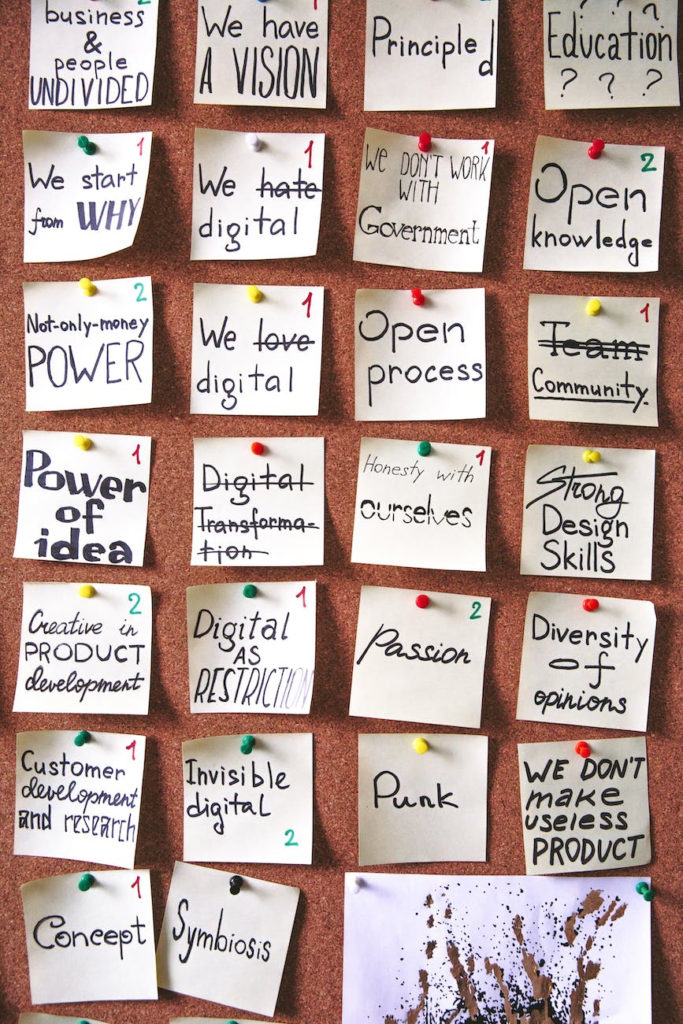The short answer is you’ll always need more than you budget. There will be curve balls, you’ll be so driven by the idea you’ll be an overnight success, yet, this is rarely the case. My budgeting advice: take your time, and look for any quick wins.
For founders, entrepreneurs and those investing in start-up businesses, it can be difficult to budget effectively. Success doesn’t happen overnight, and often there are unforeseen challenges when budgeting. This blog is intended to provide advice and guidance on budgeting for those in the start-up community. I’ll give you practical tips on how to budget and how to look for quick wins. With this advice, you can improve your financial outlook and stay on track for your long-term goals. Read on for valuable advice on budgeting for start-ups!
First, take a close look at your business model and identify any areas where you can save money. Are there any areas of your business that are needlessly expensive? Can you cut costs in any areas without affecting the quality of your product or service? Reducing your expenses is a great way to improve your bottom line and free up cash for other purposes.

Next, look for any quick wins that can help your business achieve its financial goals. A quick win is a small, easily achievable goal that can have a big impact on your business. For example, if you’re trying to increase sales, a quick win might be to offer a discount on your product. By achieving quick wins, you can stay motivated and focused on your long-term goal of growing your business.
Since you have no past financial data to go on, you must create the budget using your best guess on income and expenses (otherwise known as a profit and loss statement). Before you begin, consider why you need to spend the time to create a budget. Even if you don’t need bank financing, creating a budget is still a valuable exercise for any new and continuing business.
Key Takeaways
- A budget is a key component of your startup business plan.
- The most difficult part of creating a budget for a new business is estimating your sales.
- You should start by calculating your “day one” costs—the expenses needed to open your physical or virtual doors and begin accepting customers.
- Next up is calculating your fixed and variable costs and your estimated monthly sales.
- Creating a cash-flow statement is also an important part of creating your new business budget.
Questions to Ask Before You Begin Your Budget
Some questions to ask yourself before you begin creating your start-up business budget:
- What do you need to open the doors of your business on the first day?
- What will your fixed and variable costs be on a continuing basis?
- What can you contribute to keep costs low?
- What can you get as donations from friends and relatives?
- What can you do without?

Note
Keep your “must-haves” to the minimum. The less you need for your business startup, the sooner you can start making a profit.
Step 1: Plan for “Day One” of Your Business Startup
Begin by determining what you will need on “day one” of your business—the costs necessary to open the doors (or to take your website live) and begin accepting customers.
A “day one” start-up budget can be broken down into four categories (depending on your situation, some of the categories may not apply to your business.) The categories are:
Facilities Costs
Facilities costs include all the costs of setting up a leased or purchased location for your store, office, warehouse, or other building. These costs may be called leasehold improvements or tenant improvements. For example, you may need walls or a bathroom or a special secure area in your office or building.
If you are working from home, you probably won’t have location costs but you may have costs to fix up a room in your home for an office or a small production area in your garage.
Facilities costs also include lease security deposits and signage.
Fixed Assets
What are the fixed assets (sometimes called capital expenditures) such as furniture, equipment, and vehicles needed to set up your location and start your business? Fixed assets also include computers and machinery, furniture, and anything for your office, store, or warehouse that is needed to set up your business.
Materials and Supplies
Different from assets, materials and supplies include office supplies and any advertising and promotion materials. You will need an initial supply of these to get started.

Other Miscellaneous Costs
Miscellaneous costs include the initial fees to an accountant to help you set up your accounting system, local licenses and permits, insurance deposits, and legal fees to register your business with government entities (like your state) and prepare operating documents.
In your listing of these startup costs, include items you are contributing to the business, like a computer and office furniture. Note the cost of these items in your list so you can get credit for them as collateral for a business loan.
Step 2: Estimate Monthly Fixed and Variable Expenses
Fixed Expenses
Fixed expenses are costs that don’t change and aren’t dependent on the number of customers you have.Gather information on your fixed expenses each month. Some of the most common monthly fixed expenses include:
- Rent
- Utilities
- Phones (business phones and cell phones)
- Credit card processing—monthly fees (transaction fees are variable)
- Website service fees
- Equipment lease payments
- Office supplies
- Dues and subscriptions to professional publications
- Advertising, publicity, and promotion commitments, like social media or continuing online ads
- Business insurance
- Professional fees (legal and accounting)
- Employee pay/benefits. (This category is semi-fixed, because you may be able to lower your employee costs at times.)
- Miscellaneous expenses
- Business loan payment
Variable Expenses
Variable expenses are expenses that will change with the number of customers you work with every month. These might include:
- Postage, mailing, packaging, and shipping costs
- Commissions on sales
- Production costs
- Raw materials
- The wholesale price of goods to be re-sold
If you have a service business, you may not need many variable expenses.
Step 3: Estimate Monthly Sales
Estimating your profits and sales is probably the most difficult part of a budget because, for a new company, you don’t have a track record on which to base your estimate. You might want to do three different sales projections:
- Best-case scenario, in which you show your most optimistic estimate for first-year sales.
- Worst-case scenario, in which you show your least optimistic scenario, with very little sales during the first six months to a year.
- Likely scenario, somewhere in between. The likely scenario would be the one to show your lender.
To be realistic in your budgeting, you must assume that not all sales will be collected. Depending on the type of business you have and the way customers pay, you might have a greater or smaller collections percentage.
Include a collections percentage along with your estimate of sales for each month. For example, if you estimate sales in month one to be $50,000 and your collection percentage is 85%, show your cash for the month to be $42,500.
Calculate the variable costs of sales for each month based on sales for the month. For example, if your estimated sales for a month are 2,500 units and your variable costs are $5.50 per unit, total variable costs for the month would be $13,750.
Add monthly variable costs to monthly fixed costs to get total monthly costs (expenses).

Note
If you are selling products, you might want to calculate your break-even point to include with your budget. The break-even point shows when you will start making a profit on each sale.
Step 4: Create a Cash-Flow Statement
Cash flow is literally the amount of money going into and out of your business each month.
Begin your cash flow statement by combining total costs with total collections of money from all sales for each month. Remember that sales and collections might be different, unless you have a cash or credit business. For the cash flow statement, you’ll need to use collections.
The monthly cash flow totals should look something like this:
- Monthly sales $50,000
- Collected $42,500
- Total fixed costs $26,900
- Total variable costs $13,750
- Total cash balance $2,150
The $2,150 represents your total cash balance for the month, not your profit.
By changing your sales figures using the three scenarios above, you can see the result in your cash balance at the end of each month. This cash balance can give you information about your cash needs and how much you might need to borrow for working capital.
Note
Managing your cash flow is a key tool for keeping your new business afloat. And cash flow is more important than profits. You can be making a profit on paper, but if you don’t have money in the bank, your business won’t be able to pay its bills.
Tips for Creating Your Business Startup Budget
- Use youraccounting software program to create your budget, so you can use existing accounts and make changes more easily. If you don’t have an accounting software program, you can use a spreadsheet program.
- Most lenders require three years of cash flow statements on a month-by-month basis, and three years of quarterly and annual income statements (P&Ls).
- Income taxes are a variable expense, and you don’t know what taxes you will have to pay until you calculate your net income. Don’t include taxes in fixed expenses or variable expenses but make these a separate category.
Note
Estimate sales LOW and expenses HIGH. Everything always costs more and takes longer than you think it will, and it will take longer to get sales going than you think it will.
Frequently Asked Questions
What are the four steps to creating a budget for your small business?
One: Calculating your “day one” costs: the expenses absolutely necessary to open your business and begin accepting customers. Two: Estimating your monthly fixed and variable expenses. Three: Estimating monthly revenue. Four: Create a cash-flow statement.
What are the most common expenses for small businesses?
Some of the most common monthly fixed expenses for small businesses and start-ups include rent, utilities, equipment, website service fees, insurance, and labor. Common variable expenses include packaging, production, and shipping costs, sales commissions, and raw materials.
Each business (sector agnostic) will use this framework, for a structured plan, let’s discover if we can work together.
Thank you for reading,
A.




